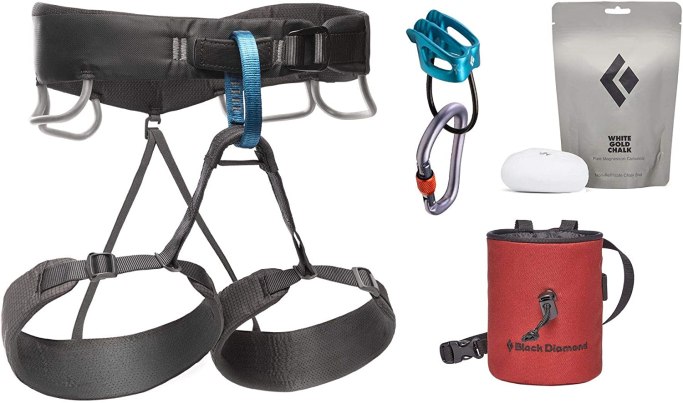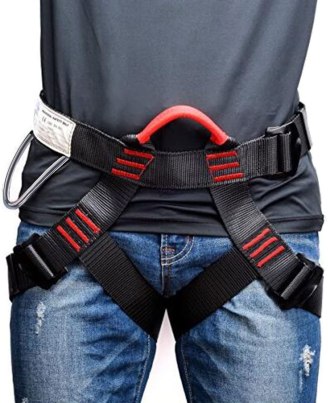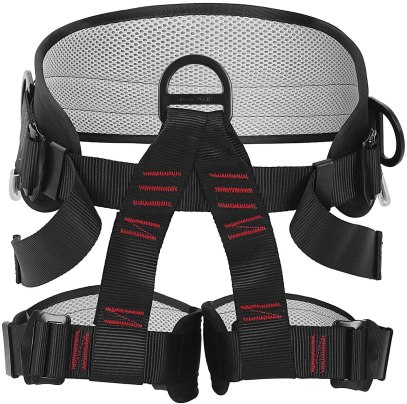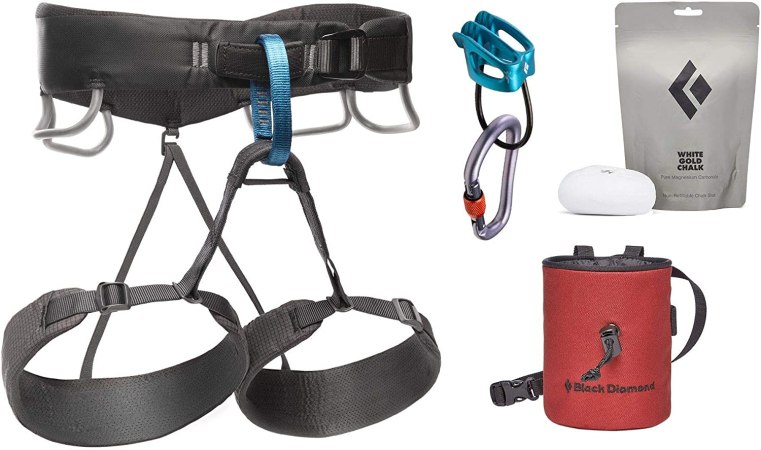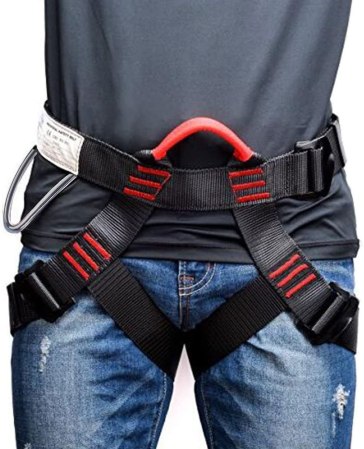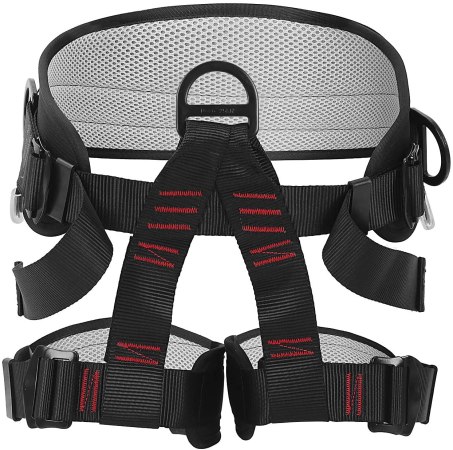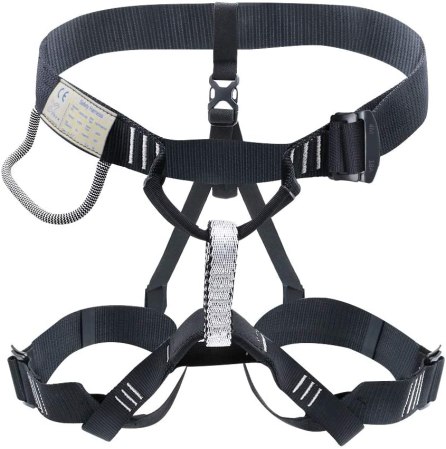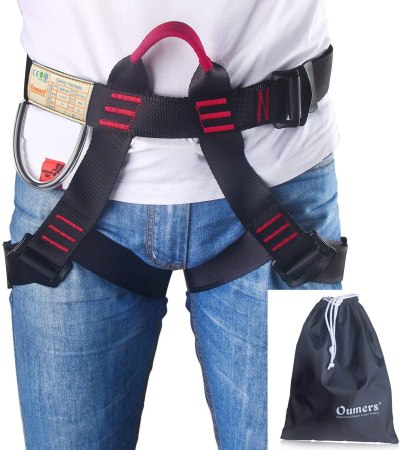We may earn revenue from the products available on this page and participate in affiliate programs.
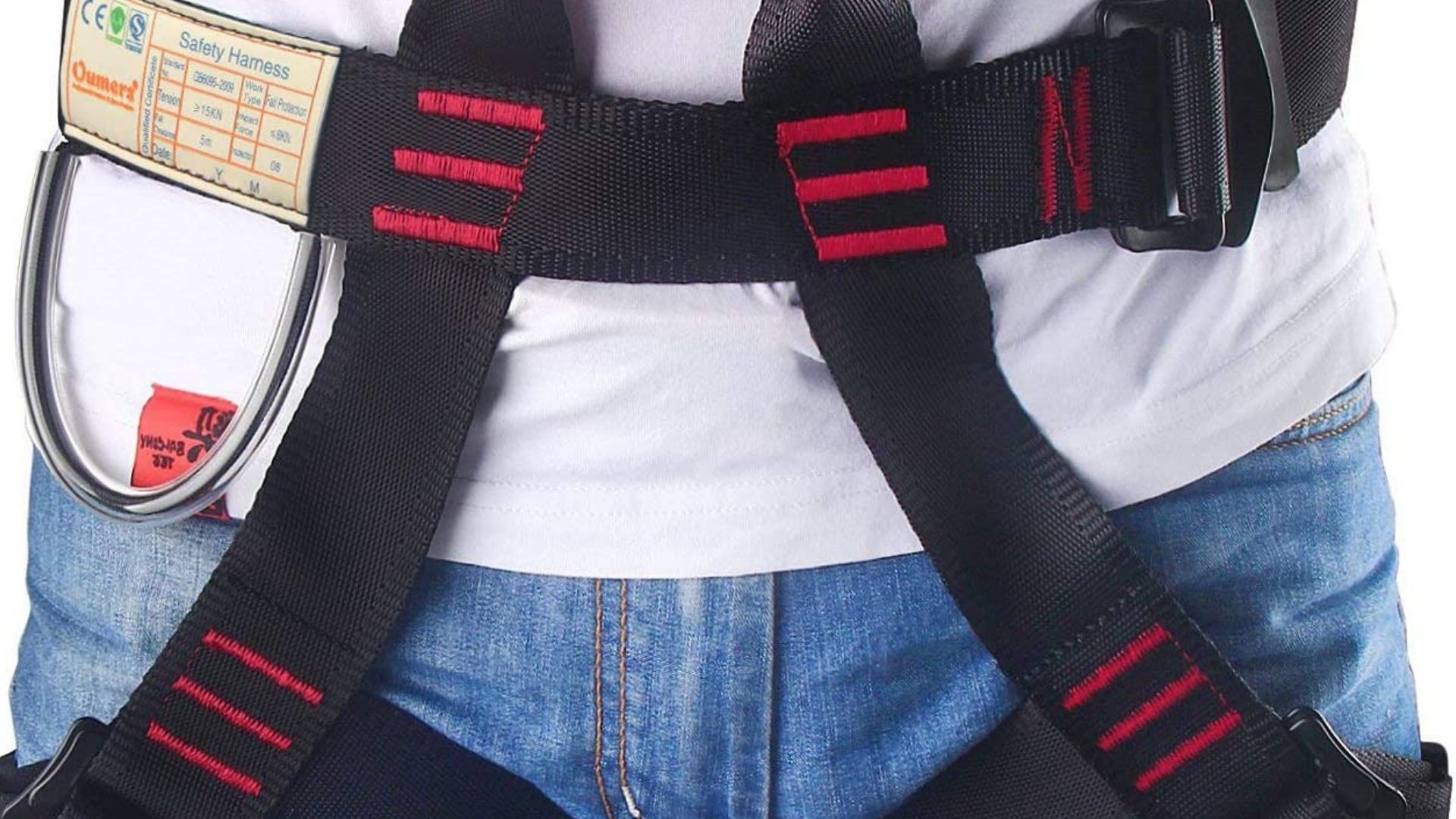
In life, you’re bound to face a few roadblocks that you must surmount to find success — but few are as literal as when scaling the side of a cliff. Rock climbing is a time-honored way to challenge yourself and grow both personally and physically. Sure, you might not be living out the plot of Vertical Limit, but since it takes only 48 feet for a fall to be lethal, a quality harness is important no matter what. Maybe you’re on track to long-haul it up K2, but even if you’re starting with a lower-key adventure like Mount Hood, you need the right equipment. A harness supports your body and balances your weight, tethering you to safety while you ascend and descend. To actually work, it must be comfortable, fit properly, and, above all else, be secure.
We’ve tracked down the best rock climbing harnesses around to make it easy for you to find the perfect fit. Let’s get to it.
Black Diamond Momentum Rock Climbing Harness
Weanas Thicken Rock Climbing Harness
AmazeFan Rock Climbing Harness
X Xben Professional Mountaineering Harness
Oumers Rock Climbing Harness
Why should you trust us
Working as a dedicated product reviewer for five years, I have extensive experience assessing outdoor and tactical gear. Using my education in the sciences and three years as a news correspondent, I curate accurate, reliable reviews that readers trust. My work is featured on Narcity Media, The Drive, and Car Bibles. Some of my most recent pieces for Task and Purpose include reviews of fitness trackers, gym bags, and tactical flashlights.
The most common types of rock climbing harnesses
Keeping yourself secure while you’re climbing involves selecting the right equipment. Every ascent is unique — even if you are going up the same route twice, ice and rock shift. When you’re out on that cliff, the last thing you want is to worry about your safety — all your attention should be on the climb. Picking out the right harness is the first step.
Sports harnesses
This type of harness is meant for indoor use, mainly on rock climbing walls you can find in the gym. These are usually fairly basic and, because you won’t be climbing very high, it doesn’t need as much tensile strength. Usually, this results in a thin belay and only two gear loops.
Most of these harnesses incorporate either an automatic or double waist buckle, making it easier to take off and put on. Generally, these don’t include leg adjustment components. Instead, they will feature an elastic material that’s more forgiving. Because of the design, these are only suited for practice climbs and should not be used outdoors.
Traditional harnesses
These harnesses have been on the market for quite some time, and referred to colloquially as trad harnesses. Meant for sporting activities, it optimizes the space while remaining comfortable. Featuring adjustable loops for the legs that are controlled with buckles, you can find them with either double back or manual attachments.
You can spot one of these harnesses through its four (or more) loops, meant to accommodate all your climbing gear. They also feature more cushioning to support you while spending long periods in the harness. While there is a haul loop for extra rope and lumbar support, these are not sufficient for more advanced climbs.
Mountaineering harnesses
The ideal rock climbing harnesses are sturdy and supportive, meant to facilitate even the most advanced excursions. They are designed to be light and adjustable, letting you focus on the climb. There will be four (or fewer) loops so you can streamline your gear without interfering with a climbing pack.
Made out of relatively thin fabric, these harnesses are easy to wear for long periods though are quick to take off during breaks. Typically, they will incorporate a smaller belay loop to reduce your weight and incorporate a supplemental loop for extra rope. Though this type is meant for heavy-duty climbs, you still must check the weight threshold and breakaway force.
What to look for when buying a rock climbing harness
When it comes time to assess the merit of your rock climbing harness, there are a few important things to suss out. First, figure out where you are planning to climb and ensure that you get a harness of the right type. It’s better to start small and work your way up to that K2 climb, but even the most basic models must have these features:
- Gear loops: This is the part of the climbing harness to which you attach your gear via carabiners. Look both at the number of gear loops and the position, as this will indicate how bulky the harness becomes when you’re fully equipped. Typically, harnesses with at least four gear loops are better for rock climbing.
- Structural support: The main structure of the harness consists of a central waist belt that connects to leg loops. Together, they support you during the climb by distributing your weight evenly across the harness. The thicker the material, the more comfortable it will be to wear. Keep an eye out for adjustable straps, since these are designed for outdoor climbing.
- Weight threshold: This is an essential component of any rock climbing harness since it is the measurement of how much it can support. Most models are designed to support at least 650 pounds. It is a matter of both the design and material used in construction. Check the specifications and be sure that the harness is certified for rock climbing.
- Breakaway force: Though the goal is not to fall, it is always a risk associated with climbing. Because of gravity, the amount of force amplifies the further you fall. The end result is the force placed on the harness. The breakaway force is a measurement of how much impact it can handle before breaking. Usually, it is between 15 and 25 kilonewtons. For more advanced climbs, look for models on the higher end of this spectrum.
Why do you need a rock climbing harness?
It is impractical (and unsafe) to rock climb without a harness. Sure, some people free climb, but that takes years of experience, not to mention specific terrain. A harness supports your weight during the climb by spreading it out evenly. This prevents strain on the climbing equipment without limiting your range of motion.
Though you can rent climbing harnesses at some spots, getting your own ensures that it meets your specific needs in terms of terrain and size. When you pick a high-quality option (like the models on this list), you can ensure that you are well-equipped to handle a climb whenever the opportunity presents itself. Even if you’re only a casual rock climber, having your own harness offers a lot of benefits, including:
- Properly designed harnesses offer substantial lumbar support to keep your back comfortable while you climb.
- A good harness keeps you safe while you climb, whether it’s indoors, on a mountain face, or on an ice shelf.
- Storage is enhanced by models with more gear loops, letting you store extra rope and climbing chalk.
- Picking a quality harness enhances durability especially since, unlike rentals, you are in full control of the wear and tear.
- When your rock climbing harness fits properly, it lets you climb more comfortably since it limits chafing on the legs.
- A rock-climbing harness gives you a full range of motion while you climb, letting you reach new heights without causing your body strain.
Pricing ranges for rock climbing harness
- Under $50: If you are new to the sport of rock climbing, you can get a good starter harness in this price range. The more basic design is meant for shorter climbs that usually take place indoors.
- Over $50: Those planning to climb outside should look at this price range. Typically, these are padded, have lumbar support, and are geared towards longer ascents.
How we chose our top picks
The path to finding the best rock climbing harnesses involved tracking down reliable sources about the sport. We researched the different types of ascents, ranging from indoor rock walls to mountain faces, and sought out harnesses that work in a variety of settings. Armed with these details, we generated a shortlist of candidates. From there, we looked at the design, materials, and features of each option before finalizing a list of the top climbing harnesses for any budget. Rock climbing is all about knowing and challenging your limits and this article is designed to help you find the tools you need to achieve this goal
